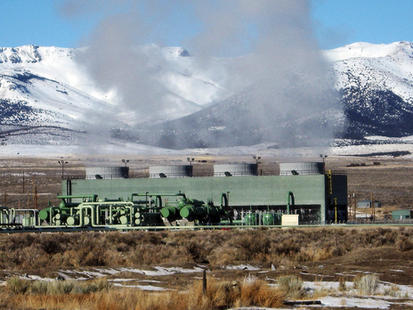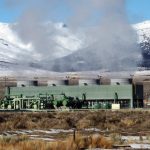
The University of Utah emerged as one of two final candidates in a nationwide hunt to develop an underground laboratory tapping ways to harness the power of man-made geothermal reservoirs.
The U.’s Milford site and Sandia National Laboratories share $29 million in funding under the Frontier Observatory for Research in Geothermal Energy, or FORGE, program.
Three competitors were eliminated in the second round, with the two finalists now moving to the third phase that will ultimately select the nation’s headquarters for the underground lab.

The idea is to harness a potential 100 gigawatts of power by injecting cold water deep into the Earth to interact with hot, crystalline rocks — temperatures that are greater than 375 degrees — and subsequently transfer that heat to the surface to produce electricity.
The technology is called enhanced geothermal systems, and this latest round of funding will enable research teams to fully instrument and design their lab as well as take care of costs with associated permitting.
“Enhanced Geothermal Systems can help us tap into a vast energy resource with the potential to generate enough clean energy to power millions of homes,” said Franklin Orr, the Energy Department’s undersecretary for science and energy.
“In supporting this technology, the FORGE program is advancing American leadership in clean energy innovation and could ultimately help us meet our climate and sustainability goals.”
The U. and Sandia’s Nevada site beat out a volcanic area in Bend, Oregon, the Idaho National Laboratory near Idaho Falls, and a Sandia site at the U.S. Navy’s China Lake Naval Air Weapons Station north of Ridgecrest, California.
Paul Gabrielsen, a U. spokesman, said the success in this latest round is notable because the Salt Lake team is the only contender that is a university and not a national laboratory with more access to federal resources.
The U.’s Milford site also has some distinct advantages because it is on publicly accessible land, as opposed to the Fallon, Nevada, site at the Naval Air Station, and there is already renewable energy infrastructure in place with an established wind farm and solar developments, Gabrielsen added.
The potential Frontier Observatory for Research in Geothermal Energy site in Utah has also been monitored for seismic activity since 1981 and has been the subject of intense drill and geothermal investigation and activity for 45 years.
In a video produced by the Utah Governor’s Office of Energy Development, the university’s principal investigator Joseph Moore detailed how two underground wells will be tested over a five-year period to determine the interplay between the rocks and the water.
Because of injection of water, or hydraulic fracturing, has proved so successful in oil and gas production, researchers hope a similar approach will ultimately make geothermal energy less costly to produce and allow it to compete on a utility scale.
Prior to this second phase selection, the Energy Department conducted two separate field visits last year to each of the five sites to meet the teams and assess the progress made so far.
The U.’s Energy & Geoscience Institute directed a five-year $10 million study at a geothermal field at southeast Idaho using similar methods for producing electricity.
“We think this is a project that belongs in Utah,” Moore said.

